
Vol. XXII, No. 9, September 2022
- Editor's corner
- What is the effect of Covid-19 on peoples' lives and expectations right now?
- Fewer Millennials are now married, but more have children
- Changes to participation and time with leisure & entertainment in 2021 compared to 2019
- No, it's not all about the attraction
- U.S. adults have begun to reduce spending on entertainment
- Thoughts on competitive socializing; is it the correct term?
- The impact of remote work on LBE group events
- Has the pandemic changed the importance of in-person socialization?
- Electric Shuffle embraces socialized gaming
The impact of remote work on LBE group events
One thing the pandemic changed is how we work. For almost two years, the 40% of all workers who had jobs that could be done at home worked at home due to lockdowns, quarantines, and to avoid infection (most service-type workers didn't have the option of working from home when their workplaces reopened). And to a significant degree, that shift to remote work (also called telework) is going to last into the future.
This January, nearly six in ten workers (59%) who have jobs that can be done from home were teleworking, all or most of the time (hybrid work). This compares with 23% who say they frequently teleworked before the coronavirus outbreak. Another 18% are working from home just some of the time. That means over three-quarters of all telework qualified workers (77%) are not working full time at their places of employment. Since telework-qualified jobs do not include most service jobs, two-thirds of remote workers skew to higher educated (65%) and upper income (67%) workers.
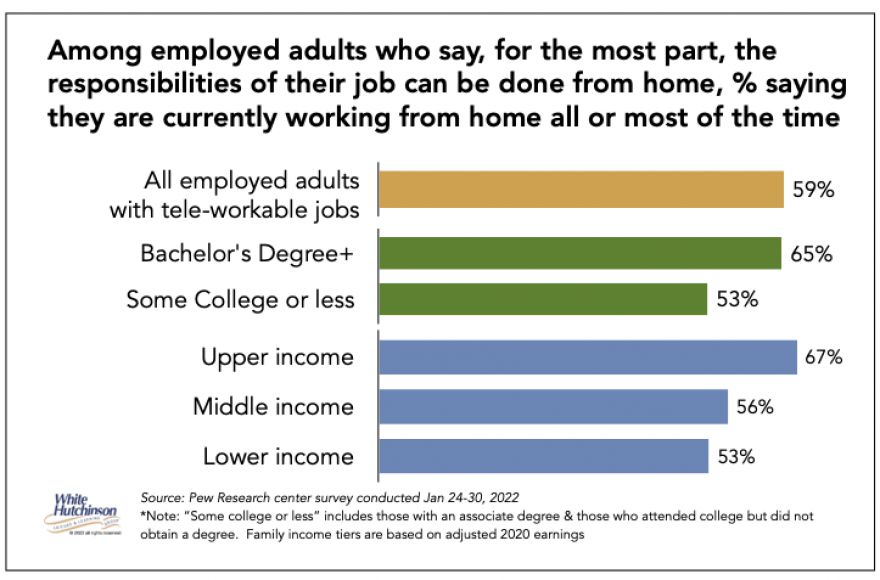
Another study by Dingel and Neiman found a high correlation between remote workability and white-collar and information jobs.
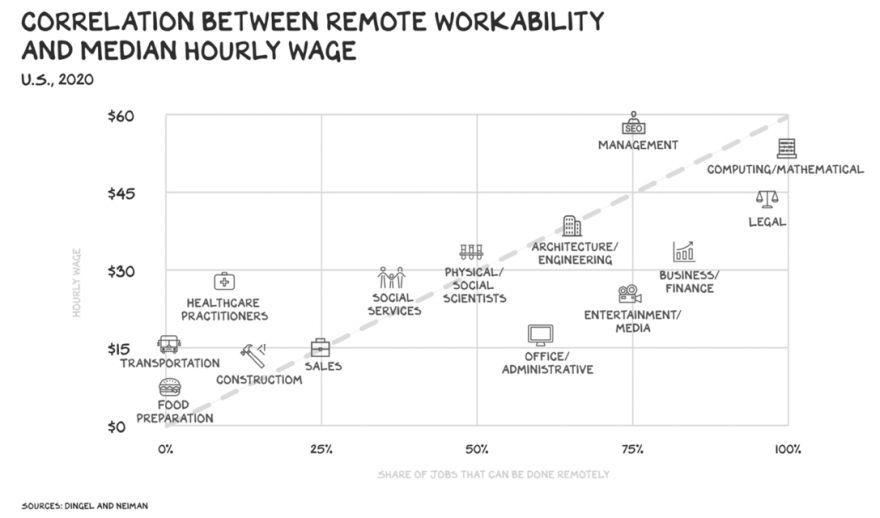
In February, Gallup found a slightly higher percentage than Pew of remote-capable job workers still working full or part-time at home, 81%, with 42% on a hybrid schedule and 39% working entirely from home. Gallup's research indicates the percentage will decline in the future, but not significantly, down to 77%.
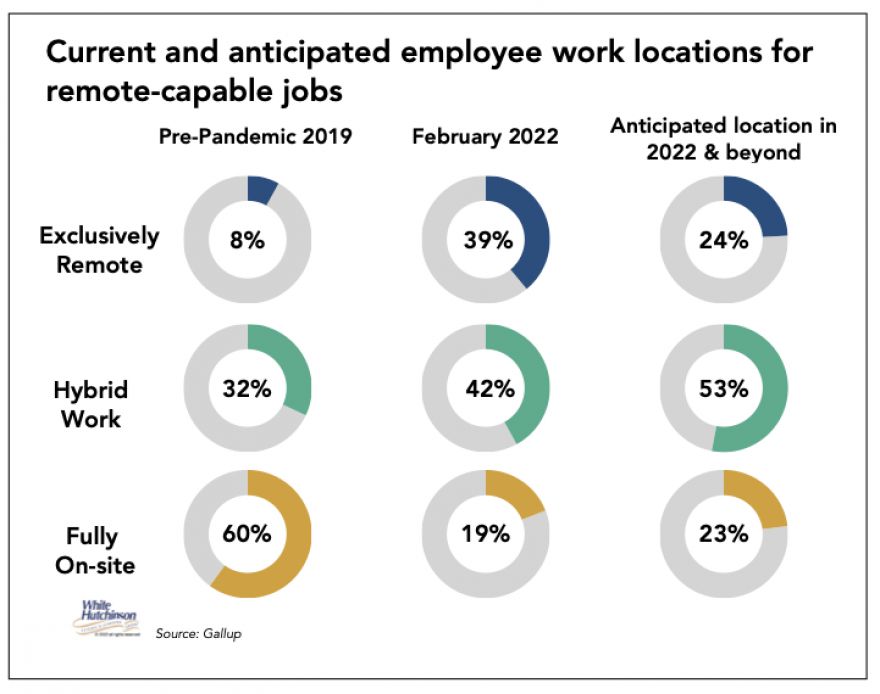
A May survey by Future Forum Pulse found that 69% of remote-capable U.S. workers were working hybrid (49%) or fully remote (23%) - 81% not full-time at the office.
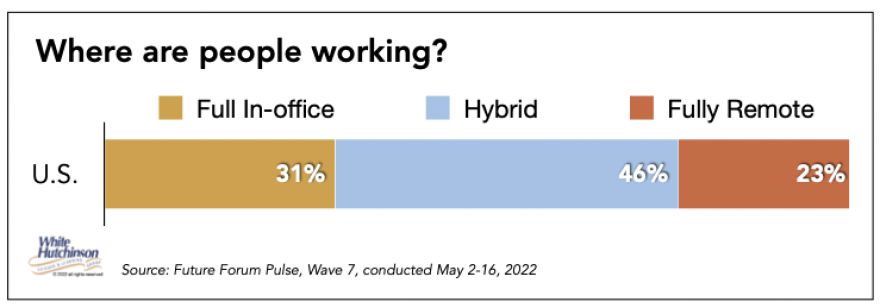
One thing is clear: many people are not returning to the workplaces they left. Where and how we work has permanently changed for many people. We are looking at a future of predominately hybrid office environments where tele-capable workers will work in the office two or three days a week and the other days remotely.
One disadvantage of remote work that can prove an opportunity for location-based entertainment venues is that most new remote workers (60%) report being less connected to co-workers. This, of course, negatively impacts developing a good company culture.
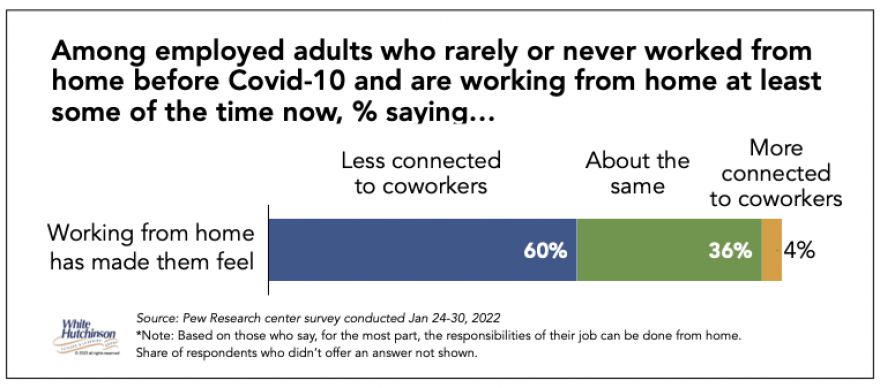
Scott Galloway, Professor of Marketing at NYU Stern School of Business, described it this way in a recent newsletter about remote work - "If you're an employer, the office is your primary tool for facilitating culture. Holiday parties and post-work drinks aren't sunk costs - they're investments in happiness, innovation, and relationships. The greatest driver of retention is if someone has a good friend at their workplace. Without a workplace, your employees have fewer points of contact."
Companies with remote workers now have the challenge of creating a cohesive company culture. Since rarely will all the hybrid workers be in the office at the same time and fully-remote workers not at all, they need to find ways to bring all their workers together at the same time to meet each other, socialize, and develop a company culture. One strong possibility for companies to overcome this problem is to hold parties and other group events at LBEs. Companies with remote workers will seek out these opportunities to offset the loss of workers being together in the office as in the past.
Vol. XXII, No. 9, September 2022
- Editor's corner
- What is the effect of Covid-19 on peoples' lives and expectations right now?
- Fewer Millennials are now married, but more have children
- Changes to participation and time with leisure & entertainment in 2021 compared to 2019
- No, it's not all about the attraction
- U.S. adults have begun to reduce spending on entertainment
- Thoughts on competitive socializing; is it the correct term?
- The impact of remote work on LBE group events
- Has the pandemic changed the importance of in-person socialization?
- Electric Shuffle embraces socialized gaming


